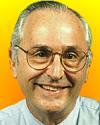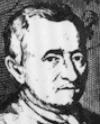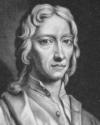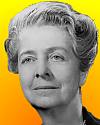 | TODAY IN SCIENCE HISTORY
NEWSLETTER - 30 DECEMBER |
 On 30 Dec 1931, Sir John Houghton was born, a Welsh meteorologist, who since the late 1960s has been drawing attention to the buildup of carbon dioxide in the earth's atmosphere, and its result of global warming. Today's Science Store pick is: Global Warming: The Complete Briefing, by John T. Houghton, who explores the scientific basis of global warming, its impact of climate change on human society, and the action that should be taken by governments, industry and individuals to mitigate the effects. He writes with crystalline clarity, outlining the evidence and state of knowledge that existed up to his book's publication in 1997 - much before the public's recent awareness. It is available New from $10.08. Used from $0.01. (As of time of writing.). On 30 Dec 1931, Sir John Houghton was born, a Welsh meteorologist, who since the late 1960s has been drawing attention to the buildup of carbon dioxide in the earth's atmosphere, and its result of global warming. Today's Science Store pick is: Global Warming: The Complete Briefing, by John T. Houghton, who explores the scientific basis of global warming, its impact of climate change on human society, and the action that should be taken by governments, industry and individuals to mitigate the effects. He writes with crystalline clarity, outlining the evidence and state of knowledge that existed up to his book's publication in 1997 - much before the public's recent awareness. It is available New from $10.08. Used from $0.01. (As of time of writing.). | | For picks from earlier newsletters, see the Today in Science History Science Store home page. | |
 | We should do astronomy because it is beautiful and because it is fun. We should do it because people want to know. We want to know our place in the universe and how things happen. - John N. Bahcall, American astrophysicist (born 30 Dec 1934).  |
 | [O]ur long-term security is threatened by a problem at least as dangerous as chemical, nuclear or biological weapons, or indeed international terrorism: human-induced climate change. � The impacts of global warming are such that I have no hesitation in describing it as a “weapon of mass destruction.” Like terrorism, this weapon knows no boundaries. It can strike anywhere, in any form� - Sir John Houghton, Welsh meteorologist (born 30 Dec 1931).  |
 | For I took an Earthen Vessel, in which I put 200 pounds of Earth that had been dried in a Furnace, which I moystened with Rain-water, and I implanted therein the Trunk or Stem of a Willow Tree, weighing five pounds: and about three ounces: But I moystened the Earthen Vessel with Rain-water, or distilled water (alwayes when there was need) and it was large, and implanted into the Earth, and leaft of the Vessel, with an Iron-Plate covered with Tin, and easily passable with many holes. I computed not the weight of the leaves that fell off in the four Autumnes. At length, I again dried the Earth of the Vessel, and there were found the same 200 pounds, wanting about two ounces. Therefore 164 pounds of Wood, Barks, and Roots, arose out of water onely. - Jan Baptista van Helmont, Belgian natural philosopher, chemist, physician and physiologist (died 30 Dec 1644).  |
| Before you look at today's web page, see if you can answer some of these questions about the events that happened on this day. Some of the names are very familiar. Others will likely stump you. Tickle your curiosity with these questions, then check your answers on today's web page. |
| Asa Griggs Candler, born 30 Dec 1851, was a manufacturer of a national product in the U.S. that had been developed by druggist John “Doc” Pemberton.
 What is the name of this product? |
 | On 30 Dec 1934, John Bahcall was born, an American astrophysicist who from the early 1960s pioneered research into the role of certain subatomic particles to understand how stars shine. These particles, that have no charge and exceedingly weak interaction with matter, are emitted by the sun and stars during the fusion energy creation process, and most are able to pass through the Earth without being stopped
 Which particle did he study? |
 | An Anglo-Irish chemist and natural philosopher (1627-1691) was noted for his pioneering experiments on the properties of gases and promoting a corpuscular view of matter that was a forerunner of the modern theory of chemical elements. In 1661, he reported to the Royal Society on the relationship of the volume of gases and pressure.
 Can you name this scientist? |
 | Rita Levi-Montalcini (1909-2011) reached the age of 102. She was a neurologist who shared the 1986 Nobel Prize for Physiology or Medicine for her discovery of NGF (nerve growth factor).
 What was her nationality at birth, and why did she move eventually to America? |
 | On 30 Dec 1982, a second full moon of the month was visible in the U.S. Although there were 41 such occurrences in the twentieth century, this was the only one to happen with a total eclipse.
 What is the common name for the uncommon second full moon of the month? |
 | On 30 Dec In 1913, Dr William David Coolidge patented a method for making ductile a certain metal for the purpose of making filaments for electric lamps. This was the solution to his task of replacing the fragile carbon filaments in electric light bulbs with metal filaments. Until he discovered the method he patented, the preferred metal he used was difficult to work and draw into suitable fine filaments.
 What was the metal he made into lamp filaments? |
When you have your answers ready to all the questions above, you'll find all the information to check them, and more, on the December 30 web page of Today in Science History. Or, try this link first for just the brief answers.
Fast answers for the previous newsletter for December 29: Klaus Fuchs • sulphur • pressing together two layers of cloth with rubberized surfaces created by evaporating a naptha solution of rubber • longer molecules are reformed into the shorter molecules suitable for engine fuel. • 326 days • Hong Kong. |
 If you enjoy this newsletter, the website, or wish to offer encouragement or ideas, please send feedback by using your mail reader Reply button. If you enjoy this newsletter, the website, or wish to offer encouragement or ideas, please send feedback by using your mail reader Reply button.
Your click on a StumbleUpon, Google+ or Facebook social button on the site webpages is also a welcome sign of appreciation. Thank you for using them. |
To find citations for quotations go to the corresponding webpage by clicking on the “quotes” balloon icon. Sources for the thumbnails appear on today's webpage with the corresponding item.
� This newsletter is copyright 2013 by todayinsci.com. Please respect the Webmaster's wishes and do not put copies online of the Newsletter � or any Today in Science History webpage. (If you already have done so, please remove them. Thank you.) Offline use in education is encouraged such as a printout on a bulletin board, or projected for classroom viewing. Online, descriptive links to our pages are welcomed, as these will provide a reader with the most recent revisions, additions and/or corrections of a webpage. For any other copyright questions, please contact the Webmaster by using your mail reader Reply button. |
--
If you do not want to receive any more newsletters,
Unsubscribe To update your preferences and to unsubscribe visit
this link 





 What is the name of this product?
What is the name of this product? 
 Which particle did he study?
Which particle did he study? 
 Can you name this scientist?
Can you name this scientist? 
 What was her nationality at birth, and why did she move eventually to America?
What was her nationality at birth, and why did she move eventually to America? 
 What is the common name for the uncommon second full moon of the month?
What is the common name for the uncommon second full moon of the month? 
 What was the metal he made into lamp filaments?
What was the metal he made into lamp filaments?  If you enjoy this newsletter, the website, or wish to offer encouragement or ideas, please send feedback by using your mail reader Reply button.
If you enjoy this newsletter, the website, or wish to offer encouragement or ideas, please send feedback by using your mail reader Reply button. 

Δεν υπάρχουν σχόλια:
Δημοσίευση σχολίου